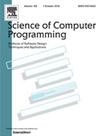Graph neural network-based long method and blob code smell detection
IF 1.4
4区 计算机科学
Q3 COMPUTER SCIENCE, SOFTWARE ENGINEERING
引用次数: 0
Abstract
The concept of code smell was first proposed in the late nineties, to refer to signals that code may need refactoring. While not necessarily affecting functionality, code smell can hinder understandability and future scalability of the program. As a result, the precise detection of code smell has become an important topic in coding research. However, current detection methods are limited by imbalanced and industrial-irrelevant datasets, a lack of sufficient structural and logical information on the code, and simple model architecture. Given these limitations, this paper utilized an industry-relevant and sufficient dataset and then developed a graph neural network to better detect code smell. First, we identified Long Method and Blob as our research subjects due to their frequent occurrence and impacts on the maintainability of software. We then designed modified fuzzy sampling with focalloss to address the issue of data imbalance. Second, to deal with the large volume of data, we proposed a global and local attention scoring mechanism to extract the key information from the code. Third, in order to design a graph neural network specifically for the abstract syntax tree of code, we combined Euclidean space and non-Euclidean space. Finally, we compared our method with other machine learning methods and deep learning methods. The results demonstrate that our method outperforms the other methods on Long Method and Blob, which indicates the effectiveness of our proposed method.
基于图神经网络的长方法和blob代码气味检测
代码气味的概念最早是在90年代后期提出的,指的是代码可能需要重构的信号。虽然不一定会影响功能,但代码气味会阻碍程序的可理解性和未来的可伸缩性。因此,代码气味的精确检测已成为编码研究中的一个重要课题。然而,目前的检测方法受到不平衡和与行业无关的数据集、缺乏足够的代码结构和逻辑信息以及简单的模型架构的限制。鉴于这些限制,本文利用了一个与行业相关且足够的数据集,然后开发了一个图神经网络来更好地检测代码气味。首先,我们确定了Long Method和Blob作为我们的研究对象,因为它们的频繁出现和对软件可维护性的影响。然后,我们设计了带有焦损的改进模糊采样来解决数据不平衡的问题。其次,为了处理海量数据,我们提出了一种全局和局部关注评分机制,从代码中提取关键信息。第三,将欧几里得空间与非欧几里得空间相结合,设计了专门针对代码抽象语法树的图神经网络。最后,我们将我们的方法与其他机器学习方法和深度学习方法进行了比较。结果表明,该方法在Long method和Blob上优于其他方法,表明了该方法的有效性。
本文章由计算机程序翻译,如有差异,请以英文原文为准。
求助全文
约1分钟内获得全文
求助全文
来源期刊

Science of Computer Programming
工程技术-计算机:软件工程
CiteScore
3.80
自引率
0.00%
发文量
76
审稿时长
67 days
期刊介绍:
Science of Computer Programming is dedicated to the distribution of research results in the areas of software systems development, use and maintenance, including the software aspects of hardware design.
The journal has a wide scope ranging from the many facets of methodological foundations to the details of technical issues andthe aspects of industrial practice.
The subjects of interest to SCP cover the entire spectrum of methods for the entire life cycle of software systems, including
• Requirements, specification, design, validation, verification, coding, testing, maintenance, metrics and renovation of software;
• Design, implementation and evaluation of programming languages;
• Programming environments, development tools, visualisation and animation;
• Management of the development process;
• Human factors in software, software for social interaction, software for social computing;
• Cyber physical systems, and software for the interaction between the physical and the machine;
• Software aspects of infrastructure services, system administration, and network management.
 求助内容:
求助内容: 应助结果提醒方式:
应助结果提醒方式:


